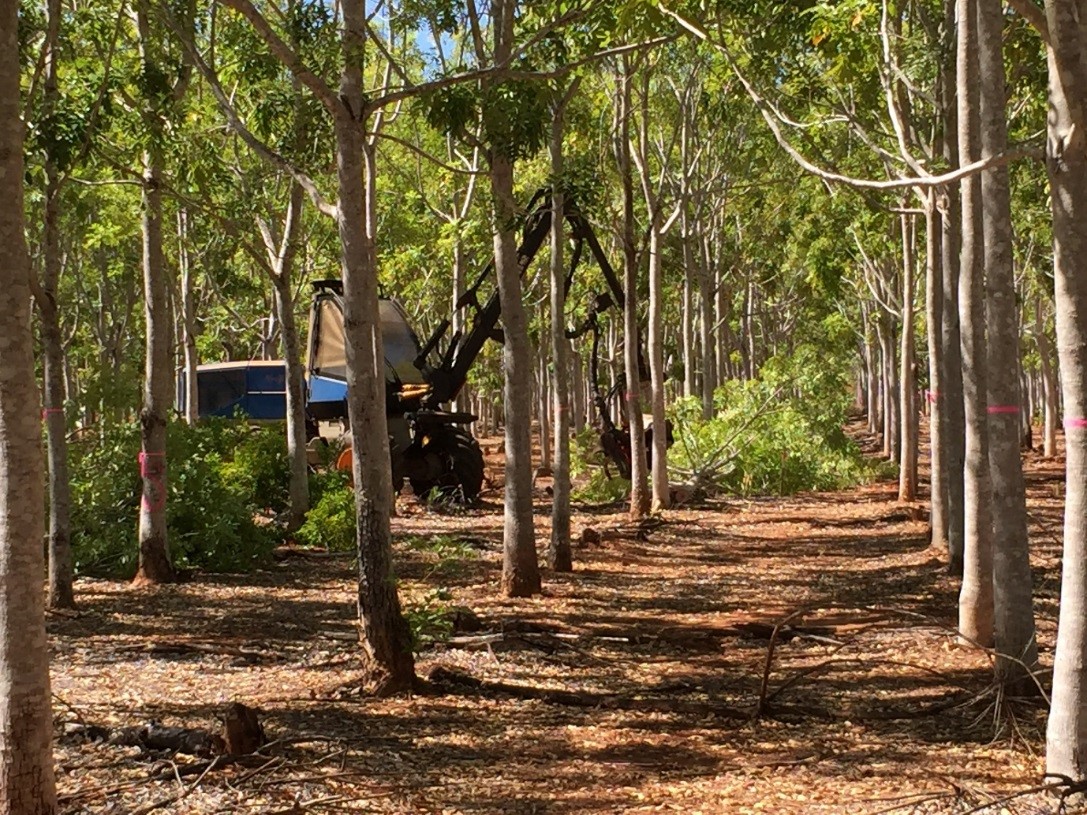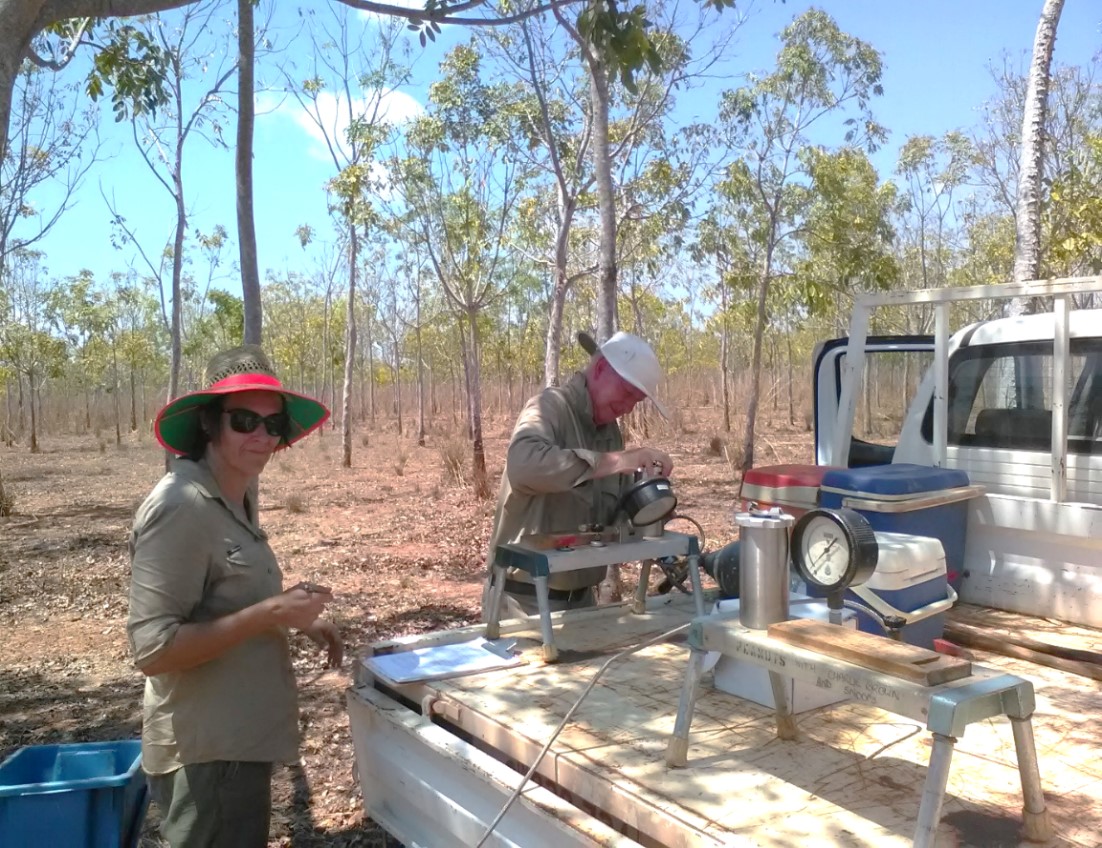Economic diversification through innovative forestry
Dallas Anson
Figure 9. Mid-rotation thinning trials are established with harvest machinery
The largest area of plantation grown African mahogany (Khaya senegalensis) in the world is located in the Douglas-Daly region of the Northern Territory, with the total estate covering around 14,000 ha. The optimal resource inputs and management systems (silviculture) for plantation grown mahogany are relatively unknown and a research project initiated by the mahogany industry aims to understand the impact of silviculture on productivity and wood quality.
Figure 10. African mahogany plantation in late December 2017
The project is jointly funded by the commercial mahogany industry and the Australian Government through the Voluntary Matching program which is managed by Forest and Wood Products Australia (FWPA). The industry has drawn on the expertise of John McGrath, of McGrath Forestry Services, to develop the study to understand the role of silviculture and optimize the productivity and wood quality in this emerging plantation timber resource. Northern Territory Department of Primary Resources and Industry and the Queensland Government are partners in this research.
The project is more than one year in and has established a range of trials focused on the impact of silvicultural inputs; fertilising, thinning and pruning, to understand the impact of changes in management on tree growth. Recently the work has been focused on determining optimum thinning and fertiliser regimes for a range of site conditions (driven by variation in soil and climate).
Over the last year, I have been working in the field in this forestry industry research project, including making pre-dawn and midday measurements of leaf water potential using a Scholander pressure chamber in the field and sampling and processing leaves and soils back in the Berrimah DPIR laboratory. The measurements have provided information about water use by the mahogany trees and how tree productivity varies between sites and over time. The initial results have demonstrated strong differences in productivity between sites and that these differences are related to the availability of water. I’ve recently acquired my chainsaw ticket and look forward to using these skills in the project.
Our future focus on refining the silviculture systems and practices for the emerging mahogany resources in northern Australia will optimise the value from these plantations.
Figure 11. Dallas Anson (L) and John McGrath (R) measure midday leaf water status of mahogany in the ‘back of the ute field lab’, Douglas Daly. (Note the thin tree crowns in the plantation at the end of the dry season due to the seasonal shedding of leaves as the trees become water stressed)
Give feedback about this page.
Share this page:
URL copied!


